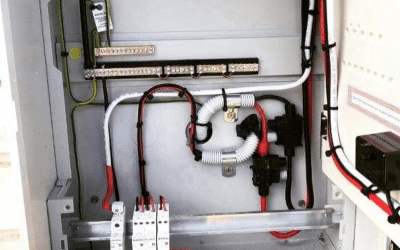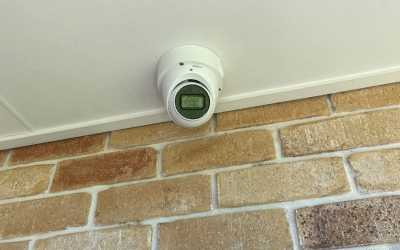Grounding is a fundamental aspect of any electrical system, and it plays a vital role in ensuring the safety and proper functioning of your home’s electrical infrastructure. As residents in Brisbane, it’s important to understand the significance of grounding and its impact on your daily life. In this article, we will explore why grounding matters in your home’s electrical system and provide you with a comprehensive understanding of its basics.
Proper grounding is essential for the safety of your electrical system and the protection of your family and property. It provides a pathway for electrical currents to safely flow into the ground, preventing the risk of electrical shocks and reducing the potential for fire hazards. Grounding helps to stabilize voltages, protect against power surges, and ensure the effective operation of electrical equipment.
Grounding is particularly crucial in homes because it helps to divert excess electrical energy, known as fault currents, away from sensitive components, appliances, and wiring. By providing a low-resistance path to the ground, grounding allows these fault currents to safely dissipate, preventing damage to the electrical system and minimizing the risk of electrical fires.
To grasp the importance of grounding fully, it’s essential to have a basic understanding of how it works and its key components. Grounding involves the connection of electrical circuits and equipment to the earth through a grounding system. This system consists of various components designed to establish a safe and reliable pathway for electrical current to flow into the ground.
Grounding systems typically include components such as grounding electrodes, grounding conductors, and grounding electrode conductors. These elements work together to create a low-impedance connection to the earth, allowing for the dissipation of fault currents and providing stability to the electrical system.
By comprehending the fundamentals of grounding, you can appreciate its role in protecting your home from electrical hazards and ensuring the smooth operation of your electrical devices and appliances.
In the following sections of this article, we will delve deeper into the intricacies of grounding, explore its benefits, discuss different types of grounding systems, address grounding in residential electrical systems, examine testing and maintenance procedures, troubleshoot common grounding issues, and highlight the importance of personal safety when dealing with grounding systems. Let’s embark on this journey to uncover the importance of grounding and its impact on your home’s electrical system in Brisbane.
What is Grounding?
Grounding is a fundamental concept in electrical systems that involves establishing a connection between electrical circuits, equipment, and the earth. It provides a safe pathway for electrical current to flow into the ground, minimizing the risk of electrical hazards and ensuring the proper functioning of your home’s electrical system.
Definition and Purpose of Grounding
Grounding, also known as earthing, refers to the intentional connection of electrical components to the earth through a grounding system. The purpose of grounding is threefold: safety, stability, and equipment protection.
Grounding primarily serves as a safety measure by directing fault currents, such as those caused by short circuits or electrical leakage, away from people and property. In the event of a fault, grounding provides a low-resistance path for these excess currents to flow into the ground, preventing electrical shocks and reducing the potential for fires.
Additionally, grounding contributes to the stability of the electrical system by establishing a reference point, or “ground,” for voltage levels. It helps to maintain voltage stability and ensures that electrical equipment operates within safe limits. By providing a predictable reference point, grounding helps to prevent fluctuations in voltage that can lead to equipment malfunction or damage.
Explanation of Grounding as a Safety Measure
Grounding plays a crucial role in safeguarding individuals and property from electrical hazards. By connecting electrical systems and equipment to the ground, grounding directs fault currents away from sensitive components, reducing the risk of electric shock.
In a properly grounded system, if a fault occurs, such as a short circuit, the excess current is diverted through the grounding conductor and safely dissipated into the earth. This action triggers protective devices, such as circuit breakers or fuses, to interrupt the circuit and isolate the fault, preventing further damage.
By providing a reliable path for fault currents, grounding helps maintain the integrity of electrical systems and minimizes the potential for electrical fires. It ensures that fault currents are effectively managed and eliminated, protecting both your home and its occupants.
Role of Grounding in Electrical Circuits
Grounding serves as a vital reference point in electrical circuits. It establishes a consistent voltage level, known as the ground potential, which is considered as the zero reference point. This ground potential allows electrical systems to operate effectively and ensures the accuracy of voltage measurements.
Additionally, grounding helps to mitigate the risk of voltage surges and transient events. When voltage spikes occur due to lightning strikes or power surges, grounding provides a path for the excess energy to dissipate into the ground, protecting sensitive equipment from damage.
In summary, grounding acts as a safety measure, stabilizes voltage levels, and safeguards electrical equipment. By understanding the purpose and importance of grounding in your home’s electrical system, you can appreciate its role in ensuring a safe and reliable electrical infrastructure. In the following sections, we will explore the components of grounding systems, the benefits of grounding, and different types of grounding systems commonly used in residential settings.
How Does Grounding Work?
Grounding operates through a well-designed system of components that work together to establish a safe and reliable connection between electrical circuits, equipment, and the earth. Understanding these grounding system components is key to comprehending how grounding functions in your home’s electrical system.
Overview of Grounding System Components
Grounding systems consist of three essential components: the grounding electrode, grounding conductor, and grounding electrode conductor. Let’s explore each component in detail:
Grounding Electrode: Connecting to the Earth
The grounding electrode serves as the physical interface between the electrical system and the earth. It provides a pathway for fault currents to flow into the ground, ensuring the safe dissipation of excess electrical energy.
Common types of grounding electrodes include metal water pipes, metal rods or plates driven into the ground, and the grounding electrode conductor itself. These electrodes are carefully selected and installed to establish a low-resistance connection with the earth, allowing fault currents to be safely directed away from the electrical system.
Grounding Conductor: Ensuring Electrical Continuity
The grounding conductor is a conductive pathway that connects various electrical components, such as outlets, switches, and electrical panels, to the grounding electrode. It ensures electrical continuity and facilitates the proper functioning of the grounding system.
The grounding conductor is typically made of copper or aluminum and is sized appropriately based on the electrical load it will carry. It is crucial that the grounding conductor is properly installed and securely connected to all relevant electrical components to maintain the integrity of the grounding system.
Grounding Electrode Conductor: Connecting the Grounding Electrode to the Grounding Conductor
The grounding electrode conductor acts as the bridge between the grounding electrode and the grounding conductor. It connects the grounding electrode, which is in direct contact with the earth, to the grounding conductor, which is linked to the electrical system.
This conductor is responsible for establishing a low-impedance path for fault currents to travel from the grounding electrode to the grounding conductor. It is usually made of copper and is sized according to the specific requirements of the grounding system.
By effectively connecting the grounding electrode to the grounding conductor, the grounding electrode conductor ensures that fault currents can safely dissipate into the ground, protecting your home’s electrical system and promoting electrical safety.
Understanding the role and function of these grounding system components is essential for comprehending how grounding works in your home’s electrical system. In the following sections, we will explore the benefits of grounding, its role in electrical circuits, different types of grounding systems, and its application in residential settings. Stay tuned to uncover the full picture of why grounding matters in your home’s electrical system.
Benefits of Grounding
Grounding plays a crucial role in ensuring the safety, functionality, and longevity of your home’s electrical system. Let’s explore the key benefits that grounding provides:
Electrical Safety: Protecting Against Electrical Shocks
One of the primary benefits of grounding is its ability to protect against electrical shocks. Grounding provides a safe pathway for fault currents to flow into the ground, effectively diverting them away from people and reducing the risk of electric shock.
Role of Grounding in Fault Current Path
In the event of a fault, such as a short circuit or ground fault, grounding establishes a low-resistance path for fault currents to follow. This path directs the excess current away from the electrical system and into the ground, preventing it from flowing through conductive surfaces or causing harm to individuals.
By facilitating the safe dissipation of fault currents, grounding helps to maintain a safe operating environment and minimizes the risk of electrical shock, ensuring the well-being of you and your family.
Protection Against Overvoltages and Power Surges
Another significant benefit of grounding is its ability to protect against overvoltages and power surges. Overvoltages can occur due to lightning strikes, utility power fluctuations, or other factors, leading to potential damage to electrical equipment.
Grounding provides a path for excessive electrical energy to be safely directed into the ground, effectively dissipating overvoltages and reducing the risk of damage to sensitive electronic devices, appliances, and other electrical equipment.
Grounding also helps to protect against power surges, which are sudden increases in electrical voltage. By providing a low-impedance path for excess energy to escape, grounding helps to stabilize voltage levels and protect your valuable equipment from the damaging effects of power surges.
Equipment and Appliance Protection
Proper grounding is essential for the optimal functioning and longevity of electrical equipment and appliances. Grounding allows electrical equipment to operate at their designed voltage levels, ensuring their performance and preventing potential damage.
Grounding for Proper Functioning of Electrical Equipment
Many electrical devices, including sensitive electronic equipment, rely on a stable reference point, known as ground, for proper operation. Without grounding, these devices may experience voltage fluctuations or electrical noise, leading to malfunctions or reduced lifespan.
By providing a reliable ground reference, grounding ensures that electrical equipment operates within safe and optimal parameters, minimizing the risk of performance issues and extending their lifespan.
Prevention of Fire Hazards
Grounding plays a crucial role in preventing fire hazards. Fault currents, if not properly directed into the ground, can lead to excessive heat buildup and potential fire outbreaks.
By establishing a low-resistance path for fault currents, grounding helps to quickly dissipate these currents and prevents them from causing overheating and subsequent fire hazards. It acts as a critical safety measure, reducing the risk of electrical fires and protecting your home and its occupants.
By understanding the benefits of grounding, you can appreciate its vital role in electrical safety, equipment protection, and fire prevention. In the following sections, we will delve deeper into different types of grounding systems, grounding in residential electrical systems, testing and maintenance procedures, troubleshooting common grounding issues, and the importance of personal safety when dealing with grounding systems. Stay tuned to learn more about the practical aspects of grounding and its significance in your home’s electrical system.
Types of Grounding Systems
Grounding systems come in different forms, each serving specific purposes in ensuring electrical safety and system integrity. Let’s explore two common types of grounding systems:
Main Earthing System (MET)
The Main Earthing System, also known as the Main Earthing Terminal (MET), is a fundamental grounding system used in residential and commercial electrical installations. It provides a connection between the electrical system and the earth, offering protection against electrical faults and lightning strikes.
Explanation of the Main Earthing System and Its Components
The Main Earthing System consists of several key components that work together to establish a reliable grounding path:
Main Earth Electrode: This is a robust grounding electrode, typically a metal rod or plate, that is securely connected to the earth. It serves as the primary interface for fault currents and provides a low-resistance path to the ground.
Main Earthing Terminal: This is the central point of connection between the main earth electrode and the electrical system. It is usually located in the main distribution board or electrical panel, where all the grounding conductors are bonded together.
Grounding Conductors: These conductors, often made of copper or aluminum, establish the electrical connection between the main earthing terminal and various electrical components, such as outlets, switches, and panels. They ensure electrical continuity throughout the system, aiding in fault current dissipation.
Grounding Electrode Conductor: This conductor connects the main earthing terminal to the main earth electrode, ensuring a reliable path for fault currents to reach the ground. It is designed to handle the maximum fault current anticipated in the electrical system.
Equipment Grounding System (EGS)
In addition to the main earthing system, individual electrical devices and appliances require their own grounding for proper operation and safety. This is achieved through the Equipment Grounding System (EGS).
Purpose and Components of the Equipment Grounding System
The Equipment Grounding System focuses on grounding specific electrical equipment and appliances, providing a dedicated path for fault currents to flow to the ground.
The components of the Equipment Grounding System include:
Equipment Grounding Conductor: This conductor connects the metal enclosure of electrical devices or appliances to the main earthing system or a local grounding electrode. It ensures that fault currents are safely redirected, preventing the buildup of hazardous voltages on exposed surfaces.
Grounding Electrode: Similar to the main earthing system, the Equipment Grounding System may utilize grounding electrodes such as ground rods or metal water pipes, providing a connection to the earth for fault current dissipation.
By implementing both the Main Earthing System and the Equipment Grounding System, your home’s electrical system can ensure comprehensive grounding protection, safeguarding against electrical faults, promoting safety, and maintaining equipment integrity.
Grounding and Residential Electrical Systems
Grounding is an essential aspect of residential electrical systems, providing safety and functionality to your home’s electrical infrastructure. Let’s explore how grounding is implemented in residential wiring and its specific requirements for power outlets, receptacles, appliances, and electronics.
Grounding in Residential Wiring
In residential wiring, grounding is achieved through a combination of grounding conductors, grounding electrodes, and proper bonding techniques. The grounding conductor, typically a copper or aluminum wire, is connected to the grounding electrode system, establishing a reliable path for fault currents to flow into the earth.
The grounding conductor is usually present throughout the electrical system, ensuring that all electrical components, circuits, and metal enclosures are effectively grounded. This helps to prevent electric shocks, reduce the risk of fires, and protect electrical equipment from damage.
Grounding in Power Outlets and Receptacles
Power outlets and receptacles play a crucial role in delivering electricity to various devices and appliances in your home. Grounding these outlets is an essential safety measure to ensure the safe operation of connected equipment.
Grounded power outlets feature three-prong receptacles, where the third prong serves as the grounding connection. This grounding conductor is connected to the grounding system, allowing fault currents to be directed safely into the ground.
It is crucial to ensure that your power outlets are properly grounded. This involves verifying the presence of the grounding conductor, ensuring proper connections, and using devices, such as ground fault circuit interrupters (GFCIs), where required for additional protection.
Grounding Requirements for Appliances and Electronics
Appliances and electronics in your home also have specific grounding requirements to ensure safe operation and protection against electrical hazards. Many devices are designed with metal enclosures or have internal components that require grounding.
Appliances and electronics with grounding provisions typically include a grounding conductor that is connected to the grounding system. This grounding conductor acts as a safeguard, redirecting fault currents and preventing the buildup of hazardous voltages on exposed surfaces.
When using appliances or electronics, it is important to ensure that the grounding provisions are intact and functional. Faulty grounding or the use of devices without proper grounding can increase the risk of electric shock or equipment malfunction.
By adhering to grounding requirements for power outlets, receptacles, appliances, and electronics, you can maintain a safe and reliable electrical system in your home. Proper grounding provides protection against electrical hazards, enhances equipment performance, and ensures the safety of you and your family.
Grounding Testing and Maintenance
Proper testing and maintenance of the grounding system in your home are crucial for ensuring its effectiveness and safety. Let’s explore the importance of regular grounding testing and some maintenance tips to keep your grounding system in optimal condition.
Importance of Regular Grounding Testing
Regular testing of your grounding system is essential for several reasons:
Safety Verification: Grounding testing helps ensure that your electrical system is properly grounded, minimizing the risk of electric shocks and electrical fires. It provides peace of mind by confirming that fault currents will be safely directed into the ground.
System Performance: Testing helps identify any faults or deterioration in the grounding system that may impact its performance. By addressing these issues promptly, you can maintain the reliability and efficiency of your electrical system.
Compliance with Standards: Regular grounding testing ensures compliance with electrical safety standards and codes, which are designed to protect homeowners and electrical systems.
Methods for Testing Grounding Systems
Several methods can be used to test the effectiveness of your grounding system. These include:
Continuity Testing: This test measures the electrical continuity between the grounding electrode and the grounding conductor. It verifies that there is a low-resistance path for fault currents.
Ground Resistance Testing: Ground resistance testing measures the resistance of the grounding system to the flow of electrical currents. It helps determine if the grounding system meets the required standards.
Voltage Drop Testing: Voltage drop testing assesses the voltage drop across the grounding conductors. It ensures that the grounding conductors have a sufficiently low impedance to carry fault currents effectively.
Consulting a qualified electrician or using specialized testing equipment is recommended to ensure accurate and reliable results.
Grounding System Maintenance Tips
Regular maintenance of your grounding system is essential to keep it in optimal condition. Here are some maintenance tips to follow:
Visual Inspection and Identification of Grounding Issues
Perform regular visual inspections of the grounding components, such as grounding electrodes, conductors, and connections. Look for signs of corrosion, damage, or loose connections. Address any issues promptly to maintain the effectiveness of the grounding system.
Importance of Proper Grounding Connections
Ensure that all grounding connections are properly made and securely tightened. Loose or inadequate connections can lead to high resistance, compromising the grounding system’s performance. Regularly check and tighten connections as needed.
By conducting regular grounding testing and implementing proper maintenance practices, you can ensure the effectiveness and reliability of your grounding system. This promotes electrical safety, protects your home’s electrical infrastructure, and provides peace of mind for you and your family.
Common Grounding Issues and Troubleshooting
Grounding issues can occur in residential electrical systems and may lead to various problems. It’s important to be aware of the symptoms of inadequate or faulty grounding and know how to troubleshoot these issues. Let’s explore common grounding problems and their troubleshooting methods.
Grounding Problems and Symptoms
Recognizing the signs of inadequate or faulty grounding is crucial for maintaining the safety and functionality of your electrical system. Some common symptoms of grounding problems include:
Signs of Inadequate or Faulty Grounding
Electrical Shocks: Experiencing mild electric shocks when touching electrical appliances, outlets, or other equipment can indicate a grounding issue.
Flickering Lights: Lights that flicker or dim unexpectedly could be a sign of poor grounding, especially if the issue persists across multiple fixtures.
Circuit Breaker Tripping: If your circuit breaker frequently trips without an apparent reason, it may be due to inadequate grounding, causing excessive current flow.
High Electromagnetic Interference (EMI): EMI can interfere with electronic devices and cause issues such as static, distorted audio, or disrupted signals. Poor grounding can contribute to increased EMI.
Equipment Malfunction: Appliances or electronic devices experiencing frequent malfunctions or premature failures may be affected by inadequate grounding.
Troubleshooting Grounding Issues
When troubleshooting grounding issues, it’s important to follow proper safety procedures and consult a qualified electrician if needed. Here are some steps you can take:
Visual Inspection: Conduct a visual inspection of your grounding components, including grounding electrodes, conductors, and connections. Look for signs of damage, corrosion, or loose connections. Ensure all connections are secure.
Continuity Testing: Perform continuity testing to check the electrical continuity between the grounding electrode and the grounding conductor. This will help identify any breaks or high-resistance points in the grounding path.
Ground Resistance Testing: Use ground resistance testing methods to measure the resistance of the grounding system. High resistance values can indicate grounding problems that need to be addressed.
Correcting Grounding Issues: If you identify grounding issues during troubleshooting, it’s important to rectify them promptly. This may involve repairing or replacing damaged grounding components, improving connections, or adding additional grounding measures as necessary.
Remember, if you are uncertain about troubleshooting grounding issues or if the problem persists, it’s best to seek professional assistance from a licensed electrician. They have the expertise and knowledge to diagnose and resolve complex grounding issues safely.
Grounding and Personal Safety
When dealing with grounding systems in your home’s electrical system, prioritizing personal safety is of utmost importance. Understanding electrical hazards and taking necessary precautions can help ensure a safe environment. Let’s explore some essential safety measures when working with grounding systems.
Safety Precautions when Dealing with Grounding Systems
Taking proper safety precautions is crucial to protect yourself and prevent electrical accidents. Here are some key safety measures to consider:
Understanding Electrical Hazards and Safety Measures
Knowledge and Awareness: Educate yourself about the basics of electricity, grounding systems, and electrical safety practices. Understanding the potential hazards and risks associated with electrical systems will help you make informed decisions and take appropriate precautions.
Power Off: Before working on any electrical components, ensure that the power supply is turned off at the main electrical panel or circuit breaker. This will prevent electric shocks and reduce the risk of accidents.
Personal Protective Equipment (PPE): Wear appropriate personal protective equipment, such as insulated gloves, safety glasses, and non-conductive footwear, when working with electrical systems. PPE provides an additional layer of protection against electric shocks and other potential hazards.
Tools and Equipment: Use insulated tools and equipment specifically designed for electrical work. Insulated tools help minimize the risk of electrical contact and increase safety.
Avoid Overloading Circuits: Overloading circuits by plugging in too many devices can lead to overheating and electrical hazards. Distribute the electrical load evenly across circuits and avoid using extension cords as a permanent solution.
Importance of Consulting a Qualified Electrician
While basic maintenance and troubleshooting can be done by homeowners, certain tasks require the expertise of a qualified electrician. Here’s why consulting an electrician is essential:
Expertise and Experience: Electricians are trained professionals who possess the knowledge and experience to handle complex electrical systems. They can accurately diagnose grounding issues, ensure compliance with electrical codes, and implement necessary repairs or upgrades.
Safety and Compliance: Electricians prioritize safety and ensure that electrical work meets safety standards and regulations. Their expertise reduces the risk of errors, electrical accidents, and potential hazards.
System Reliability: Hiring a professional electrician for grounding system installations and maintenance ensures the reliability and effectiveness of the system. They have the skills to properly design, install, and test grounding systems, ensuring optimal performance and safety.
Remember, if you encounter any electrical issues or are unsure about the complexity of a task, it is always recommended to consult a qualified electrician. They have the knowledge, tools, and expertise to address grounding issues safely and effectively.
Grounding in Special Circumstances
Grounding requirements may vary in certain situations, such as older homes and outdoor or wet areas. Let’s explore the considerations for grounding in older homes and renovations, as well as the specific requirements for grounding in outdoor and wet areas.
Grounding in Older Homes and Renovations
When dealing with older homes or renovation projects, it’s important to assess the existing grounding system and make necessary upgrades to ensure safety and compliance with current standards. Consider the following considerations for grounding systems in older homes:
Considerations for Grounding Systems in Older Homes
Assessing the Existing System: Start by evaluating the condition of the existing grounding system in older homes. Check for the presence of grounding conductors, proper connections, and grounding electrodes. If the grounding system is inadequate or non-existent, it may be necessary to install a new grounding system.
Grounding Upgrades: Upgrading the grounding system may involve installing new grounding conductors, grounding electrodes, and bonding connections. This can help improve electrical safety, protect against electrical faults, and ensure compliance with modern standards.
Professional Assistance: Due to the complexities involved in grounding upgrades, it is advisable to seek the expertise of a qualified electrician. They can assess the existing system, provide guidance on necessary upgrades, and ensure the installation is done correctly.
Grounding in Outdoor and Wet Areas
Outdoor and wet areas, such as pools, spas, and outdoor electrical installations, require special considerations when it comes to grounding. Proper grounding is crucial to prevent electrical hazards and ensure the safety of individuals using these areas. Here are some grounding requirements for outdoor and wet areas:
Grounding Requirements for Pools, Spas, and Outdoor Electrical Installations
Equipotential Bonding: Pools and spas require equipotential bonding, which involves connecting all conductive components, such as metal railings and water pipes, to create an equipotential zone. This helps prevent the risk of electrical shock in the pool or spa area.
Grounding for Outdoor Installations: Outdoor electrical installations, such as outdoor lighting, irrigation systems, and power outlets, should be properly grounded. This involves ensuring the presence of grounding conductors and proper connections to the grounding system.
GFCI Protection: Ground Fault Circuit Interrupters (GFCIs) are essential for outdoor and wet areas. GFCIs are designed to detect ground faults and quickly shut off power, reducing the risk of electric shock. They should be installed for all electrical outlets in these areas.
Compliance with Local Regulations: It’s important to consult local regulations and codes specific to Brisbane for any additional grounding requirements or guidelines for outdoor and wet areas. This ensures adherence to local safety standards.
By considering the unique requirements of older homes and addressing grounding needs in outdoor and wet areas, you can ensure the safety and compliance of your electrical system. Remember, professional assistance from a licensed electrician is crucial for assessing and implementing proper grounding solutions in these special circumstances.
Summary
Grounding plays a critical role in the safety and proper functioning of your home’s electrical system. Throughout this article, we have explored the importance of grounding, its components, benefits, troubleshooting methods, and considerations for special circumstances. Let’s recap the key points and emphasize the significance of prioritizing grounding in your home.
Grounding is essential for several reasons. It provides a safe path for electrical currents, directing any potential fault currents into the ground, thereby minimizing the risk of electrical shocks and fire hazards. It also protects against overvoltages and power surges, ensuring the longevity and reliable performance of your electrical equipment and appliances.
Understanding the basics of grounding, such as its purpose, components, and how it works, helps homeowners make informed decisions about their electrical systems. By implementing proper grounding techniques, such as installing grounding electrodes, conductors, and ensuring proper connections, you can enhance the safety and functionality of your home’s electrical infrastructure.
Regular testing and maintenance of the grounding system are vital. Periodic testing helps identify any issues or faults in the grounding system, allowing for prompt repairs and ensuring its continued effectiveness. Routine maintenance, including visual inspections and proper grounding connections, prolongs the lifespan of the grounding system and reduces the risk of malfunctions or failures.
In special circumstances, such as older homes or outdoor and wet areas, specific considerations for grounding are necessary. Upgrading grounding systems in older homes and adhering to grounding requirements for outdoor installations, pools, and spas are essential to maintain electrical safety and compliance.
We encourage all residents in Brisbane to prioritize grounding in their home’s electrical system. By doing so, you protect yourself, your loved ones, and your property from electrical hazards and ensure the proper functioning of your electrical infrastructure.
In conclusion, grounding matters. It is the foundation of a safe and reliable electrical system in your home. By understanding its importance, implementing proper grounding techniques, and seeking professional assistance when needed, you can create a secure and efficient electrical environment. Remember, electrical safety is a shared responsibility, and grounding is an integral part of it. Stay informed, stay safe, and make grounding a priority in your home’s electrical system.







